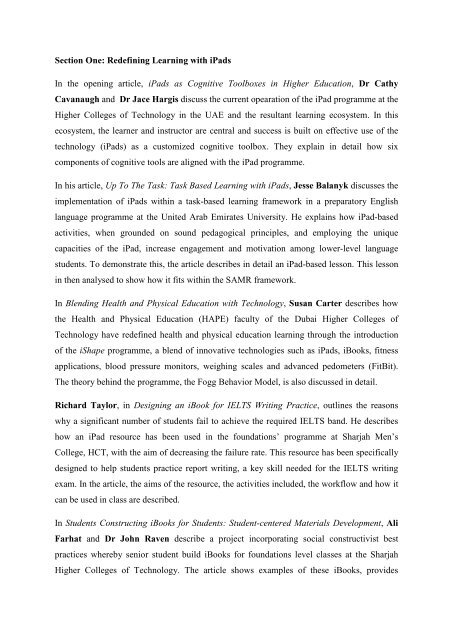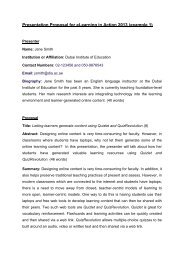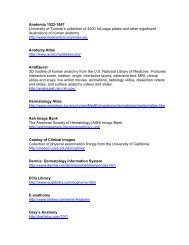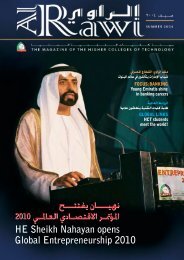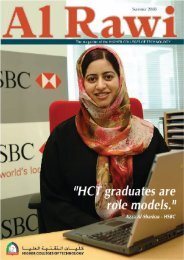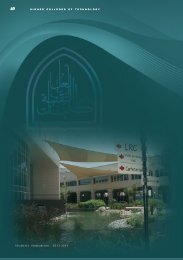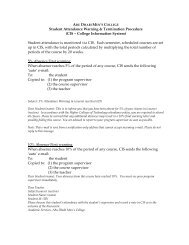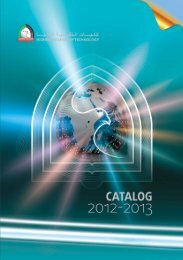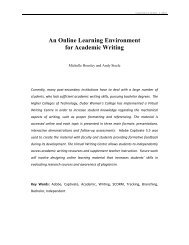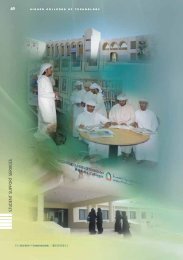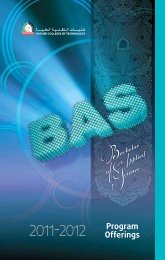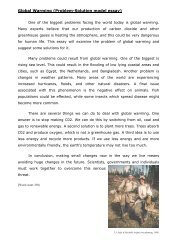Editorial Note - Sharjah Women's College - Higher Colleges of ...
Editorial Note - Sharjah Women's College - Higher Colleges of ...
Editorial Note - Sharjah Women's College - Higher Colleges of ...
You also want an ePaper? Increase the reach of your titles
YUMPU automatically turns print PDFs into web optimized ePapers that Google loves.
Section One: Redefining Learning with iPadsIn the opening article, iPads as Cognitive Toolboxes in <strong>Higher</strong> Education, Dr CathyCavanaugh and Dr Jace Hargis discuss the current opearation <strong>of</strong> the iPad programme at the<strong>Higher</strong> <strong>College</strong>s <strong>of</strong> Technology in the UAE and the resultant learning ecosystem. In thisecosystem, the learner and instructor are central and success is built on effective use <strong>of</strong> thetechnology (iPads) as a customized cognitive toolbox. They explain in detail how sixcomponents <strong>of</strong> cognitive tools are aligned with the iPad programme.In his article, Up To The Task: Task Based Learning with iPads, Jesse Balanyk discusses theimplementation <strong>of</strong> iPads within a task-based learning framework in a preparatory Englishlanguage programme at the United Arab Emirates University. He explains how iPad-basedactivities, when grounded on sound pedagogical principles, and employing the uniquecapacities <strong>of</strong> the iPad, increase engagement and motivation among lower-level languagestudents. To demonstrate this, the article describes in detail an iPad-based lesson. This lessonin then analysed to show how it fits within the SAMR framework.In Blending Health and Physical Education with Technology, Susan Carter describes howthe Health and Physical Education (HAPE) faculty <strong>of</strong> the Dubai <strong>Higher</strong> <strong>College</strong>s <strong>of</strong>Technology have redefined health and physical education learning through the introduction<strong>of</strong> the iShape programme, a blend <strong>of</strong> innovative technologies such as iPads, iBooks, fitnessapplications, blood pressure monitors, weighing scales and advanced pedometers (FitBit).The theory behind the programme, the Fogg Behavior Model, is also discussed in detail.Richard Taylor, in Designing an iBook for IELTS Writing Practice, outlines the reasonswhy a significant number <strong>of</strong> students fail to achieve the required IELTS band. He describeshow an iPad resource has been used in the foundations’ programme at <strong>Sharjah</strong> Men’s<strong>College</strong>, HCT, with the aim <strong>of</strong> decreasing the failure rate. This resource has been specificallydesigned to help students practice report writing, a key skill needed for the IELTS writingexam. In the article, the aims <strong>of</strong> the resource, the activities included, the workflow and how itcan be used in class are described.In Students Constructing iBooks for Students: Student-centered Materials Development, AliFarhat and Dr John Raven describe a project incorporating social constructivist bestpractices whereby senior student build iBooks for foundations level classes at the <strong>Sharjah</strong><strong>Higher</strong> <strong>College</strong>s <strong>of</strong> Technology. The article shows examples <strong>of</strong> these iBooks, provides


